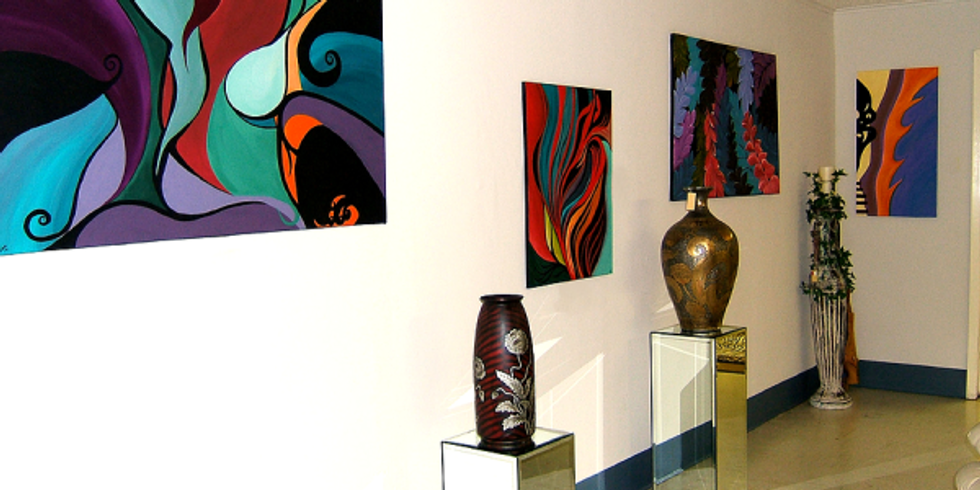
This is a true story as told to DiversityJobs Street Smarts, where you can find career interviews for the job you’ve been looking for. Visit to find an interview in your desired field today.
I am an art investment acquisition specialist - that's one of the titles that people would usually think of as an "art investor." I'm about to celebrate my fifth year in the business, including a year-long internship I had with a major investment firm.
Being an art investor means you have to do a little bit of everything. In an average week, a lot of my time is spent working with clients who want to sell or lend their art. That calls for a lot of due diligence and financial acumen.
However, there are also times when clients want to expand their portfolio by acquiring a piece from here or there, or from this or that artist or time period. That will call for investigation of where the piece can be found, verification of its provenance -- how it got to where it is -- and finally, long-term negotiation with the art's current holder. All that is art history work combined, of course, with sales.
I would definitely rate my job enthusiasm as an eight or nine out of ten. No job is perfect, but this comes pretty close. Sometimes, one aspect of the work will predominate over the others for long periods at a stretch - and that will be a little tiring. But before you know it, there's something new on the horizon.
I've always been interested in art, but never much of an artist myself - so this job moves me. I didn't expect that I'd find a place in what's traditionally thought of as the strict business sector where art would be so appreciated.
I wouldn't say that there's anything unique about my experience or qualifications that people should know about. It's true that I got a pretty early start in both art and finance, but even with just one of those skill sets, I think it's possible to break into this field with the right mix of dedication and passion.
I got started in the field by accident. Even though I studied a lot of art in college, my major was finance. The trouble was that I wasn't very happy with it. Six months into an internship in my senior year, I thought I was done - until I talked to a visiting manager from another branch who had come down for a meeting about art acquisition. "Art acquisition?" I thought. I asked a few questions and I was soon on my way.
I’ve learned that investors who deal with art are fickle, and the art collectors - the sellers, ultimately - are stubborn. Art investors don't always want to take sound investment advice, and collectors can be some of the most challenging people in the world to deal with.
The most important thing I've learned about the working world is that things change fast. My schedule, what's on my to-do list, who I'm working with, what we're looking for - all these things can change daily or weekly. Everyone learns to deal with that in their own way, whether that means saving aggressively or keeping their resume updated.
Strange things happen on this job all the time. I once had to strike a deal with a modern art collector who would only meet with me at a construction site during work hours. Have you ever seen that famous photo of the construction workers having lunch up on a beam thirty stories up? It was something like that.
I think that I have one of the most interesting jobs in the world, so it's not hard to get up for work every day. Every once in a while, though, I come across a seller whose dream really is coming true when they find out I'm prepared to broker a six figure deal for a piece of art they thought was a reproduction. That really opens your eyes to how this job can change lives.
The biggest daily challenge in this field is multi-tasking. You have to have a good command of your right brain and your left brain – you're constantly shifting from one kind of task to another. Plus, you'll deal with a lot of strong personalities, including people who value their art way out of the actual price range for it’s worth.
Financially, things have been a lot better for art investors in the past. Investors could expect to derive bonuses from major wins like art sales and lease agreements. Nowadays, benefits and incentives have taken a hit. Salary can range anywhere from $40,000 to $80,000, but I'd say the average is probably somewhere in the mid-$50,000s.
Getting hired in this field isn't easy. You're going to need experience and credentials in finance, selling and art to even be considered, although in most cases, the first two will be respected more than the last.
If a friend were considering this line of work, I'd tell them to go for it, with a few caveats. One: It's not easy to break in. Two: Don't expect some fat "banker paycheck," because this isn't the area of finance where you'll get it.
In five years I'd like to be an independent art dealer. As an art investor, you have the backing of a firm and a portfolio of clients. A dealer is a total entrepreneur -- which means you have to get the contacts and lay the groundwork before you get started. With luck, that's what I'm doing now.
Job art investor image from Bigstock

 Bigstock
Bigstock Bigstock
Bigstock Bigstock
Bigstock


